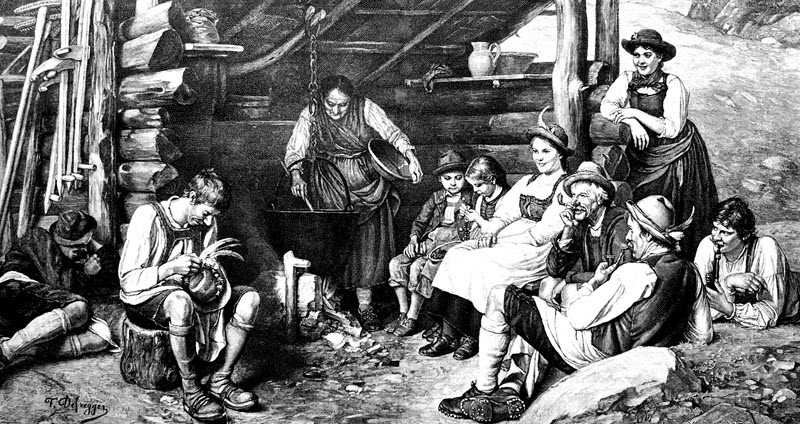| By Tara Atterberry |
John Harrower, a Scottish businessman, was forced to leave his home and family in December 1773 in search of a more stable means of employment. He traveled across Europe for more than six weeks but was not able to secure employment and was desperate for work. As a last resort, he signed an indentured servant contract and boarded a ship with other indentured servants, to travel from London to Virginia in 1774, where he served as a tutor to Colonel William Daingerfield’s children and the children of other Virginia planters. John Harrower is one of more than 200 indentured servants who will be profiled in the upcoming 2020 edition of Gale’s Passenger and Immigration Lists Index.
It has been estimated that between one-half and three-fourths of the English, Scottish, Irish and German men and women who immigrated to the American colonies in the 17th century came as voluntary indentured servants. Indentured servitude seemed to be a means of solving two problems simultaneously: (1) Filling the need for a stable and reliable workforce that was scarce, but desperately needed, in the colonies; and (2) Providing a means for those who wished to venture to the New World, but were financially unable to afford the journey.
In return for the cost of passage across the Atlantic Ocean, the servants agreed to work for their colonial masters for a specified period of time—generally between four and seven years—at the end of which, they would have earned their freedom to seek their fortune in the New World. In return, masters were required by law to provide their indentured servants with adequate clothing, food, housing, and medical care. Many masters treated their servants well, while as many mistreated and/or neglected their servants by not providing them with adequate food and shelter, forcing them to work under inhumane conditions and subjecting them to physical abuse.
On paper, this arrangement was ideal for both parties. However, in reality, the life of an indentured servant was inherently fraught with difficulty and hardship. If they were able to survive the arduous journey by sea, they often suffered from oppressively strenuous work schedules, inadequate and unhygienic housing, and, even for those servants whose masters were decent and humane, malnutrition and disease. In fact, it is estimated that almost half of all indentured servants in the American colonies during the 17th century may have died by the end of their second year in the New World. While many desperate immigrants undoubtedly saw indentured servitude as their ticket to a better life in the New World, the stark realities of the daily life—an ocean away from their families, friends, and everything they had ever known—must have been, at the very least, sobering.
For the first time, this edition of Passenger and Immigration Lists Index will include the occupations of those who came to North America, including more than 200 European immigrants, like John Harrower, who claimed indentured servitude as their occupation in immigration documents.
Just like solving a puzzle starts with the first puzzle piece, solving the mystery of a family’s history starts with one great source. Passenger and Immigration Lists Index is one of these great sources of genealogical information, providing the profiles of more than 100,000 immigrants from more than 70 countries, in the 2020 edition, available in December 2019, sourced from more than 40 historical publications, naturalization records, government documents, ship manifests, and other obscure historical sources.
Passenger and Immigration Lists Index is a must-have product for public, academic, and special libraries; research centers; or any organization that maintains historical genealogical special collections or serves a population interested in genealogy and family history research. It is the aim of Passenger and Immigration Lists Index to lead you to the sources that will unravel some of the mysteries surrounding this fascinating group of people, particularly as they relate to individual family histories.
Passenger and Immigration Lists Index, 2020 edition, is available in print and licensing formats December 2019. Reach out to your Gale sales consultant today >>

Meet the Author
Tara Atterberry has been with Gale for 24 years and manages biography and genealogy content. In her free time, she enjoys spending time with her two teenage daughters, who constantly remind her that she knows nothing, herding her three cats, scrapbooking, and researching her dead ancestors.

